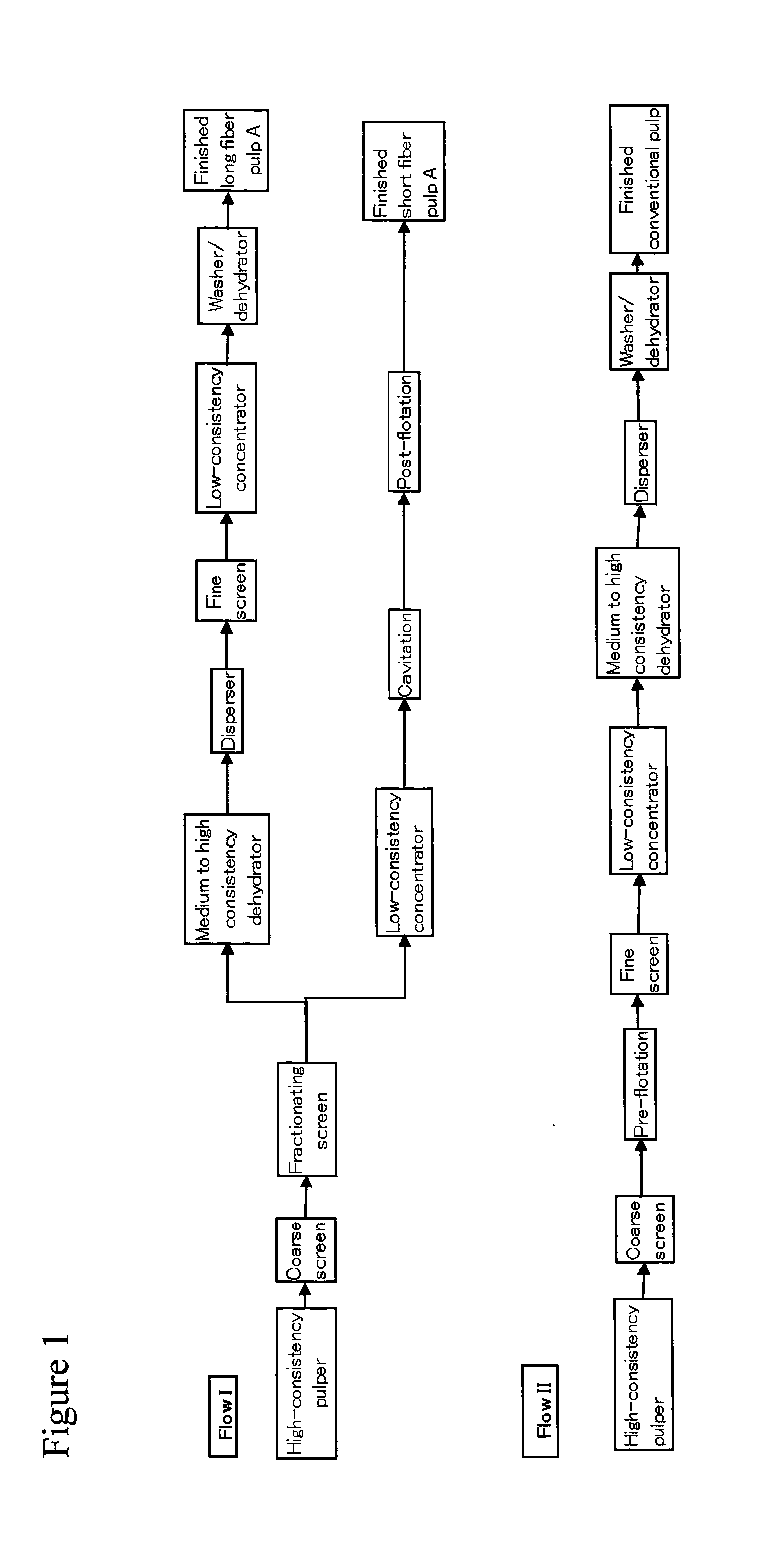Processes for preparing pulp and paper
a technology of pulp and paper, applied in the field of pulp and paper preparation, can solve the problems of increasing electric power cost, yield loss, and degrading the quality of recycled pulp, and achieve the effects of reducing electric power and water consumption in the facility, high consistency, and efficient fractionation
- Summary
- Abstract
- Description
- Claims
- Application Information
AI Technical Summary
Benefits of technology
Problems solved by technology
Method used
Image
Examples
examples
[0061]The following examples further illustrate the present invention without, however, limiting the invention thereto. As used herein, parts and % are on a weight basis respectively, and numerical ranges are indicated to include their endpoints, unless otherwise specified.
[0062]Evaluation Methods
[0063]The long fiber and short fiber fractions obtained were evaluated for consistency and freeness, the electric power required for fractionation (power consumption rate), as well as water consumption as described below. Further, the fibers before fractionation and the long fiber and short fiber fractions were analyzed for ash content, average fiber length, fiber size composition and the number of adhesive contaminant particles. Further, handsheets having a basis weight of 60 g / m2 were prepared according to JIS P 8209 using a cylinder handsheet machine, and determined for the number of dirt particles, brightness, and ink levels.
(Freeness CSF)
[0064]Determined according to the Canadian stand...
experiment 1
Example 1
[0074]In a pilot test plant of Aikawa Iron Works Co., Ltd., waste newspaper and waste magazine paper were introduced into a high-consistency pulper at a weight ratio of 7:3 and defibered at a temperature of 40° C. for 15 minutes in the presence of 1% by weight (net) of caustic soda, 1% by weight (gross) of sodium silicate, 0.5% (net) of hydrogen peroxide and 0.2% (gross) of a higher alcohol deinking agent based on the input solids content. The pulp obtained after defibration was treated at a solids content of 2.5% by weight using a coarse screen having a slit width of 0.2 mm to remove contaminants such as coarse adhesive contaminants, thereby giving a pulp slurry containing waste paper pulp (waste paper pulp slurry A).
[0075]Then, waste paper pulp slurry A adjusted to a solids content of 1.9% by weight was fractionated into a long fiber fraction and a short fiber fraction using an outward flow slit screen. Specifically, it was treated using an outward flow slit screen (MaxFl...
example 2
[0076]The same procedure as described in Example 1 was followed except that the fractionation ratio between the long fiber fraction and the short fiber fraction was adjusted to 47:53 by controlling the feed flow rate and the reject flow rate of the fractionating screen.
PUM
| Property | Measurement | Unit |
|---|---|---|
| width | aaaaa | aaaaa |
| width | aaaaa | aaaaa |
| slit width | aaaaa | aaaaa |
Abstract
Description
Claims
Application Information
 Login to View More
Login to View More - R&D
- Intellectual Property
- Life Sciences
- Materials
- Tech Scout
- Unparalleled Data Quality
- Higher Quality Content
- 60% Fewer Hallucinations
Browse by: Latest US Patents, China's latest patents, Technical Efficacy Thesaurus, Application Domain, Technology Topic, Popular Technical Reports.
© 2025 PatSnap. All rights reserved.Legal|Privacy policy|Modern Slavery Act Transparency Statement|Sitemap|About US| Contact US: help@patsnap.com

